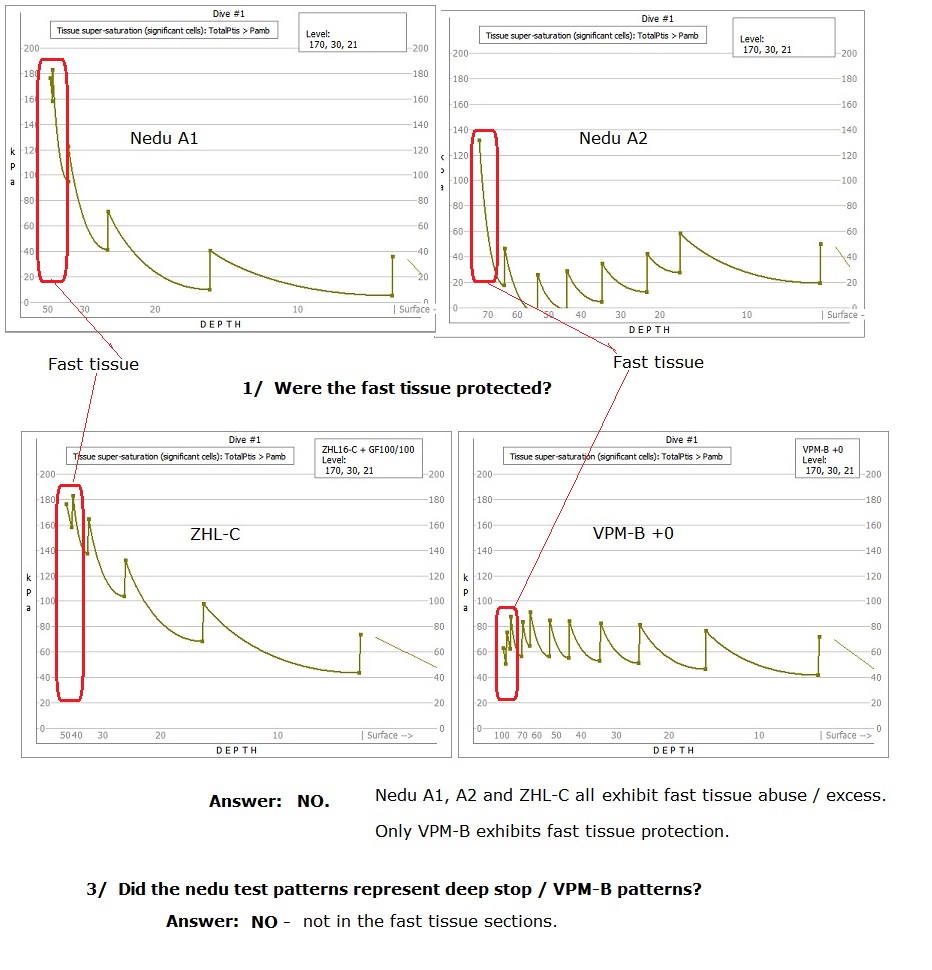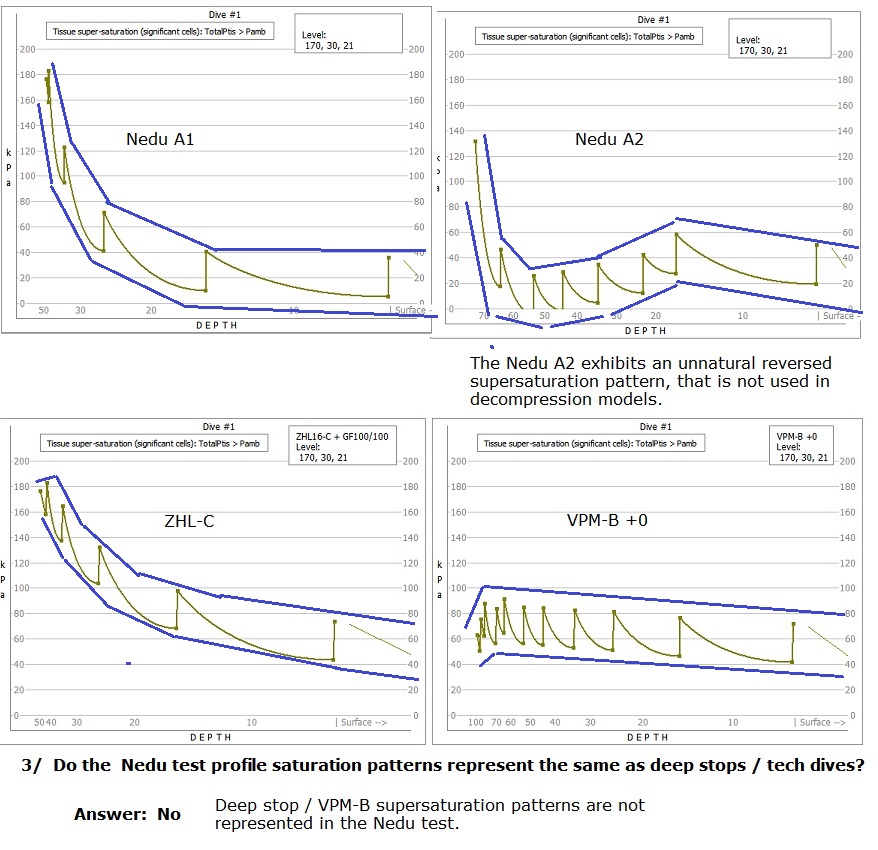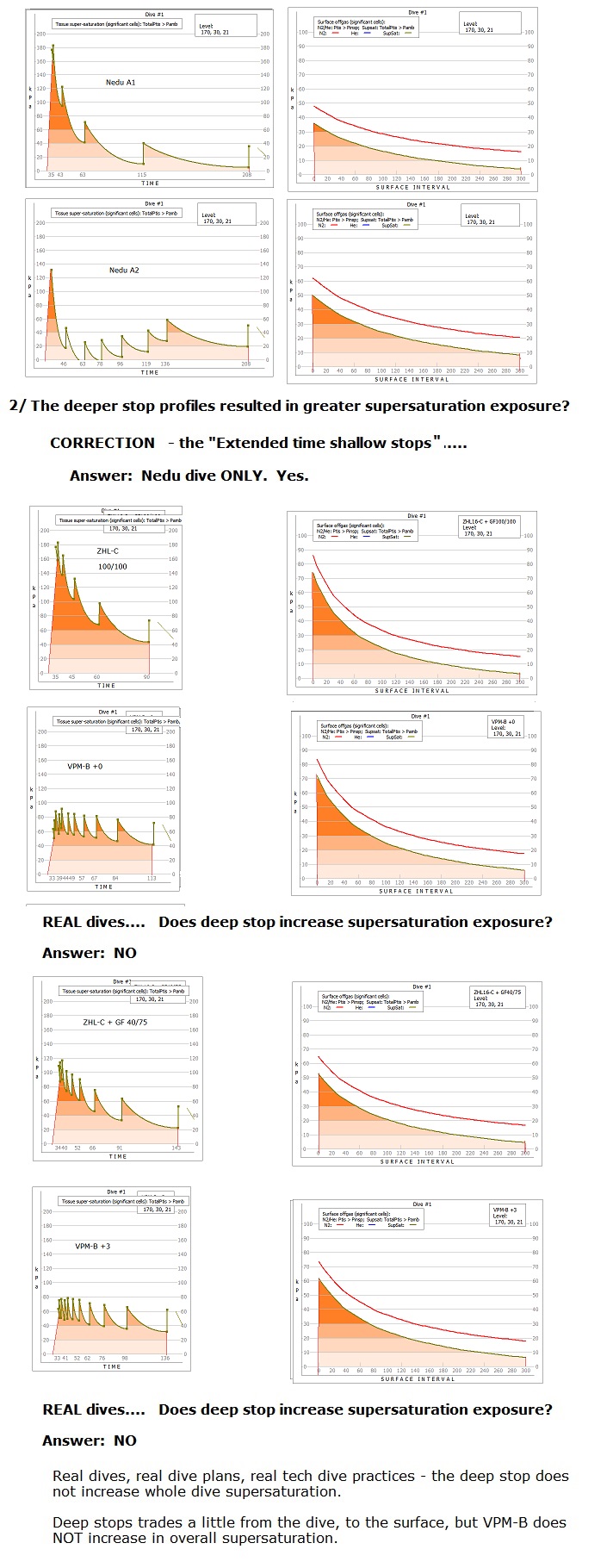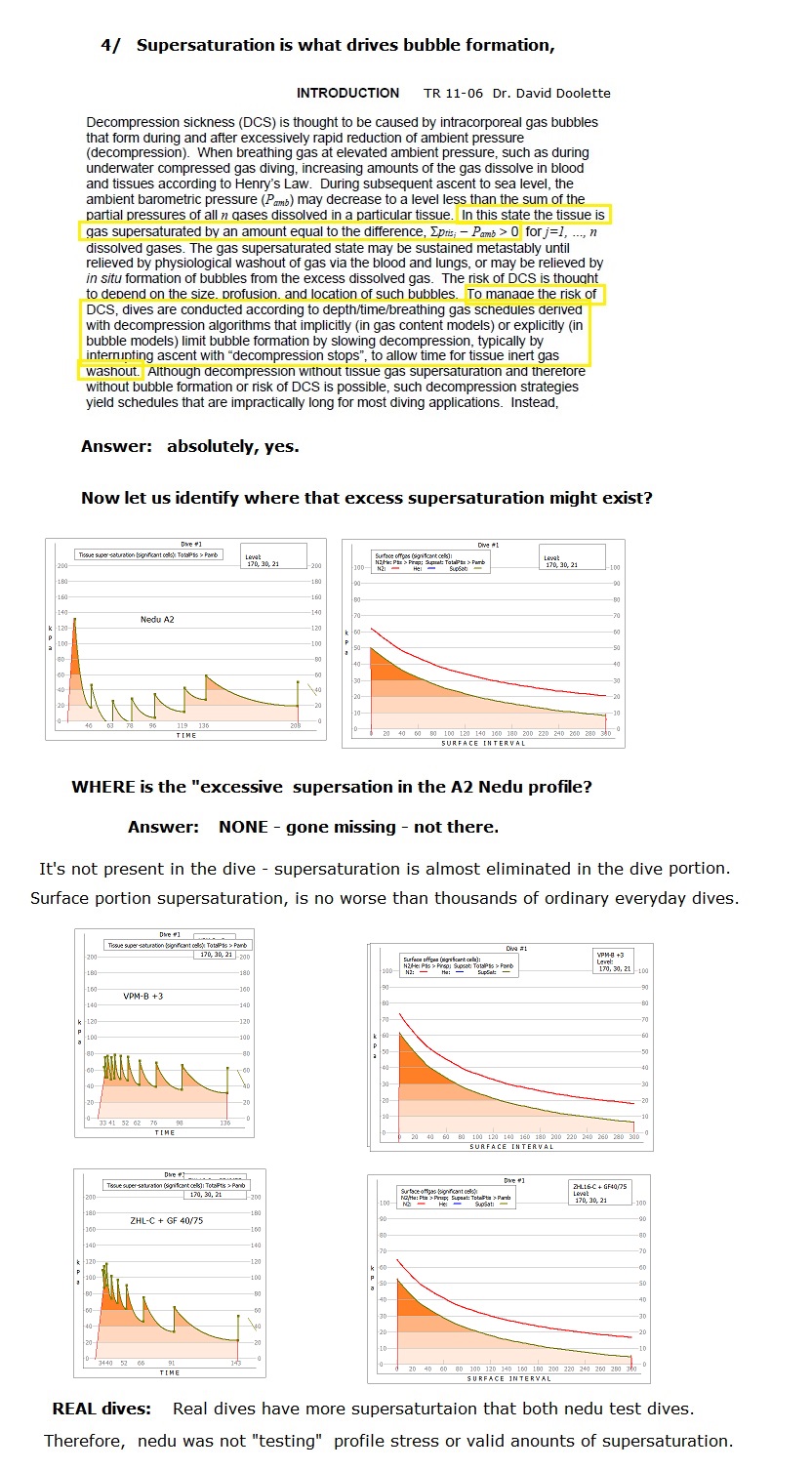Hello,
I have dedicated enough time to arguing with Ross Hemingway previously. That is not to say that I will not do so here if necessary, or in future on new matters of importance, but everything one needs to know on the “deep stops” subject (to date) is already clearly articulated on the internet. My advice is to go to the rebreatherworld threads which others have linked to if you really want a comprehensive appreciation of the subject. I have little appetite (or time) for getting into debates about the details again but I will make some relatively general comments.
To those who suggest that decompression is an inexact science, you are right. But it is nonetheless a science, and this particular area of scientific focus is slowly producing real data that inform the debate taking place here. Thus far, every published study that has objectively investigated the use of deep stops in decompression diving has produced a signal that their hypothetical advantages do not play out in reality. No one pretends to know what optimal decompression is, but we are becoming increasingly aware of what it isn’t. There is a strong signal in the available data that over-emphasising deep stops (which almost certainly includes the level of “deep stopping” prescribed by bubble models) is disadvantageous. I am aware (through attending presentations and collegial discussions) of two further studies involving tech diving-relevant profiles with differing emphasis on deep stops that are being prepared for publication. These are not my studies and I will say nothing further about them, but Ross will find them “interesting”.
Against the emerging evidence which indicates that we need to rethink the deep stop mantra there is NOTHING. There has NEVER been evidence that emphasising deep stops is a good idea. It was never more than a theoretically attractive concept that gained wide traction in the technical diving community for a variety of reasons. In this regard I am intrigued by comments like:
If this means that a lot of dives incorporating deep stops have been done with no DCS then yes, of course. But this in no way informs the question about the relative risk of profiles which emphasise deep stops to differing degrees. I want to be unequivocally clear on this. There is an expanding body of objective studies producing a confluent signal: over-emphasising deep stops increases risk of DCS, against which (to date) there is NOTHING.
My own position on this matter is a simple reflection of this situation and that is also true of David Doolette and other scientists involved in the area. Ross’s portrayal of us as anti-VPM conspirators is simply insane; we are just scientists following the evidence as it evolves. If the evidence was favouring deep stops then we would be leaning that way, and if the evidence were to swing back toward deep stops then I would swing back with it.
Ross, of course, argues that the most influential study to date (the NEDU study) was deeply flawed and repeatedly states that it was so badly designed that it did not even test deep stops despite its stated intention to do so. There is reason enough to challenge the face validity of that position, held as it is by a helicopter mechanic / deep stops salesman, whereas those who designed the study are arguably the world’s most respected decompression scientists, none with a commercial agenda.
But leaving the “eminence based medicine” and conflict-of-interest arguments aside, it is an aspect of his argument that resonates with some readers (including several on this thread) who struggle to understand the relevance of the NEDU study to typical technical profiles. This is something that uwsojourner has toiled hard to overcome, and his post 681 is highly recommended.
Deep Stops Increases DCS
My quick summary of the key concepts goes like this:
Even though the NEDU study profiles don’t seem “typical” to the average technical diver, they do the things that we expect of the respective profile types. The deep stops profile protects the faster tissues from supersaturation early in the ascent (which is one of the fundamental planks of deep stop theory), but at the cost of greater supersaturation in the slower tissues later in the ascent. The shallower stops profile results in more supersaturation in the faster tissues early in the ascent, but has less supersaturation in the slower tissues later in the ascent and at the surface. These patterns of supersaturation distribution are an inevitable consequence of having a finite amount of decompression time and choosing to emphasise either deep stops or shallow stops.
If deep stop theory was correct, then the protection of fast tissues early should have produced some degree of protective effect, but the opposite was seen. The profile with the higher supersaturation early was actually the safest. Moreover, when the respective profiles were evaluated for overall exposure to supersaturation (using the integral supersaturation approach explained by uwsojourner) the deeper stop profiles resulted in greater supersaturation exposure. This passes the face validity test. Supersaturation is what drives bubble formation, and bubbles are the vectors of primary injury in DCS. More supersaturation overall is therefore likely to be bad.
The relevance to “real” tech diving profiles is that the same patterns of supersaturation distribution and overall supersaturation can be seen when profiles of equal length but emphasising deep stops to a greater or lesser degree (eg as in VPM vs GF approaches – see uwsojourner’s post which I have linked to above) are compared. Why would we expect the outcomes to be any different in this setting where the supersaturation patterns are the same? The difference might not be as exaggerated as in the NEDU study (which was designed to be intentionally provocative), but the “truth in the universe” if we could do a big enough study is highly unlikely to be any different.
Can I be clear that my argument is not that endlessly shallow stops are better. Someone earlier made the
reductio ad absurdum point that the ultimate shallow stop profile is to simply come shooting straight to the surface and not make any stops. Clearly you can’t do that! So, one could conclude that all decompressions are “deeper” than the ultimate shallow stops profile. It is the degree of “deep stopping” that is under question, and in particular, whether the approach prescribed by bubble models (which certainly emphasise deep stops) is optimal. The best evidence we have at this point in time suggests that bubble models over-emphasise deep stops. Exactly how far we should back away from deep stops is presently not clear. That work has not been done.
Simon M









